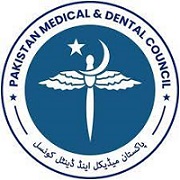ANALYSIS OF MINIMAL INHIBITORY CONCENTRATION(MIC) OF AZITHROMYCIN IN EXTREMELY DRUG RESISTANT (XDR)SALMONELLA ENTERICA SEROVAR TYPHI IN PRE-COVID AND AFTER ONE YEAR OF COVID-19 PANDEMIC
Abstract
Abstract
Objective: To compare the Minimal Inhibitory Concentration (MIC) of Azithromycin in Extremely Drug Resistant (XDR) Salmonella enterica serovar Typhi (S. Typhi), Pre-COVID and after one year of COVID-19 pandemic.
Methodology: This cross-sectional study was conducted in the Department of Microbiology, Combined Military Hospital, Lahore, Pakistan, from May 2021 to April 2022. All XDR S. Typhi isolated during the study period were included and tested. Kirby –Bauer Disk Diffusion method was used for antibiotic susceptibility, and Azithromycin MIC was determined by the E-strip method. The latest Clinical & Laboratory Standards Institute (CLSI) breakpoints for Azithromycin susceptibility testing were used.
Results: A total of 384 XDR S. Typhi were included in the study. MICs of these isolates were in the ranges of 2-16ug/mL, and all were sensitive to Azithromycin as per CLSI standards. These were further compared with MICs of the pre-covid isolates. The MICs of the isolates were relatively higher as compared to pre-COVID MICs.
Conclusion: The potential Azithromycin resistance in XDR Salmonella Typhi is knocking at the door. Sensitivity patterns should be reported with MICs values, and if possible higher values should be screened for the presence of any potential resistance genes. Antibiotic stewardship should be strictly implemented.






